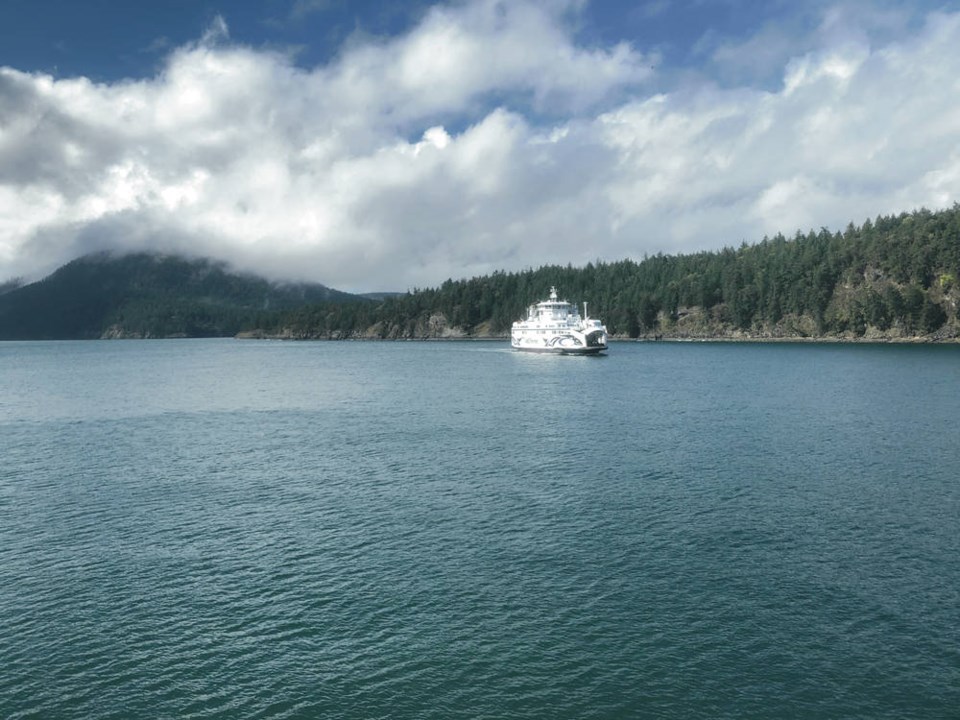Shauna Doll and Chris Genovali
The Raincoast Conservation Foundation enlisted the help of the Environmental Law Centre at the University of Victoria to review the legal mechanisms available to the Islands Trust to carry out their “preserve and protect” mandate.
The law centre’s work resulted in a report synthesizing 10 regulatory recommendations for improving forest governance in the Islands Trust Area, but one overarching certainty emerged from the process: provincial law reform is necessary.
The Islands Trust area includes 13 major islands and more than 450 smaller islands in the Salish Sea.
These islands are representative of the Coastal Douglas-fir zone, a unique habitat and climate combo that lines South Eastern Vancouver Island and adjacent islands.
It is characterized by old tree species like Douglas fir, iconic arbutus and culturally significant Garry oak meadows. It is also the smallest and least protected of 16 such zones in British Columbia.
Due to this exceptional ecology, the Islands Trust was created by the provincial government in 1974 with the sole purpose of “preserv[ing] and protect[ing] the Trust Area and its unique amenities and environment for the benefit of the residents of the Trust Area and of British Columbia.”
This was, and remains, an unprecedented move. The Trust Act created a governance structure unlike any other in the province, or indeed the country. The trust qualifies as neither a municipality, nor a regional district. Instead it is identified as a unique special interest federation.
This distinction is both a burden and an opportunity.
This uniqueness from B.C. local governments means the trust does not have access to the same legal tools that municipalities or regional districts use for tree protection, despite tree protection being fundamental to achieving the trust’s mandate.
Attempts by local trustees to implement tree protection through development permit areas have been denied in the past, and the implementation of tree protection bylaws is outside the trust’s jurisdiction.
Historically, the province has, in essence, set the trust up, if not to fail, then at least to flail, by charging it with environmental care without providing the tools to fulfill that obligation.
However, according to the law centre’s report, the trust mandate has court-recognized legal effects and puts the Trust Council, the collection of 26 local trustees from the 13 major Islands, in a unique position to protect some of the rarest forests and habitats in the county.
Recently, Raincoast made a presentation to the Trust Council to describe the report and outline recommendations for action. The recommendations are as follows:
The Trust Council shall…
1. Pursue development permit areas to protect forest ecosystems and regulate forest practices on private lands.
2. Seek enforceability of development permits.
3. Pursue the implementation of tree-cutting permits and forest management regulations.
4. Explore options for using zoning (i.e. “conservation zoning”) as an approach to regulating tree removal and retention on private lands.
5. Prioritize the use of the current tools available for “preserv[ing] and protect[ing] the Trust area and its unique amenities and environment”, such as conservation covenants.
6. Amend the Trust Policy Statement to reflect the dual obligation of local trustees, and the wider trust federation, to uphold the trust’s object.
These recommendations were met with support from many trustees and resulted in two motions passed. This is the first step toward securing stronger tools for the trust to protect threatened forests and habitat.
This news came during a week plagued by wildfires and thick smoke, and only days after the provincial old growth strategy review was released to mixed reviews.
One of the shortcomings of the old growth strategy review was the failure to capture any of the coastal Douglas fir zone in the interim protection measures. As such, B.C.’s least protected forest zone will continue to be subject to unsustainable, under-regulated logging and tree cutting, with its subsequent conversion to housing and commercial development.
Such conversion perpetuates climate change at a regional and microsite level through canopy loss, desiccation of the former understory, soil erosion and compaction, and increased fire risk in degraded forests, all the while furthering habitat loss and declines in biodiversity in a rare and threatened ecosystem.
Shauna Doll is Raincoast Conservation Foundation’s Gulf Islands forest project coordinator. Chris Genovali is Raincoast’s executive director.
